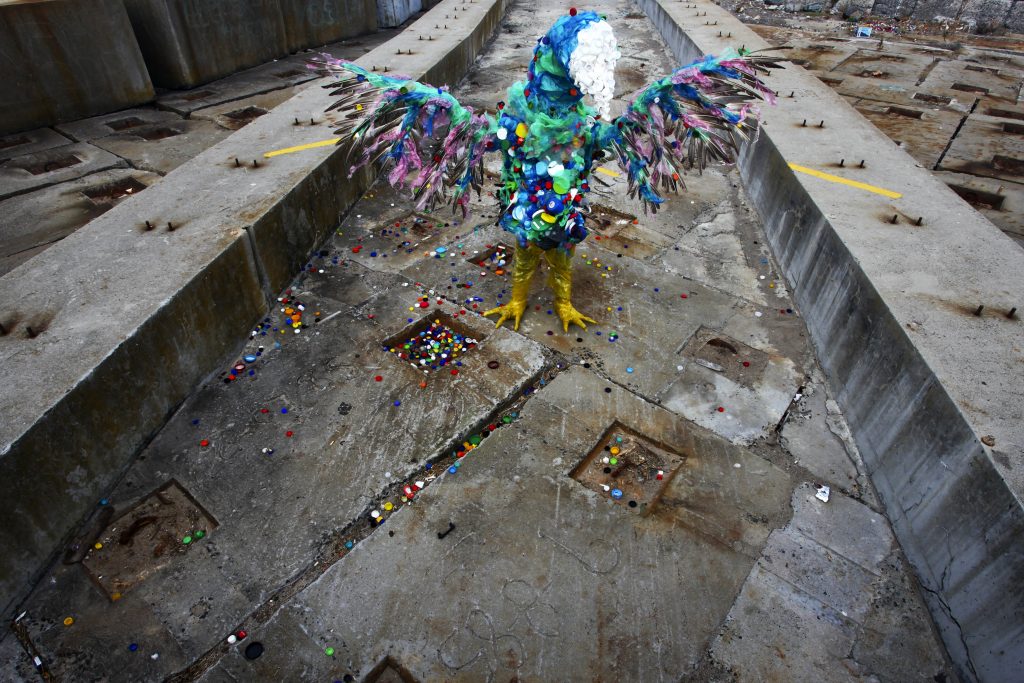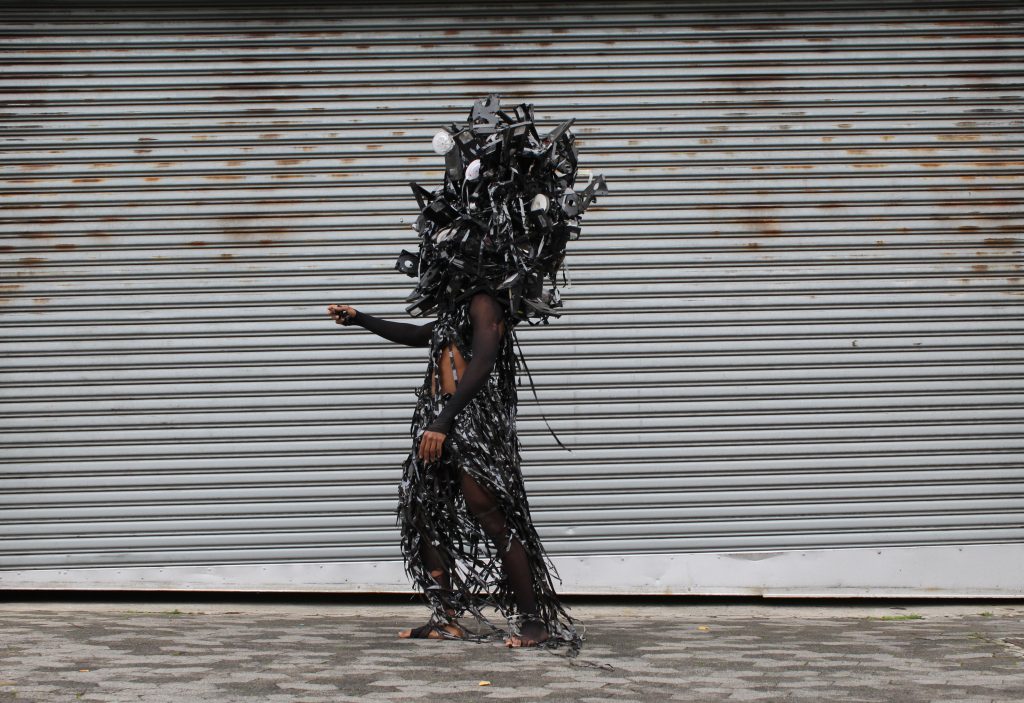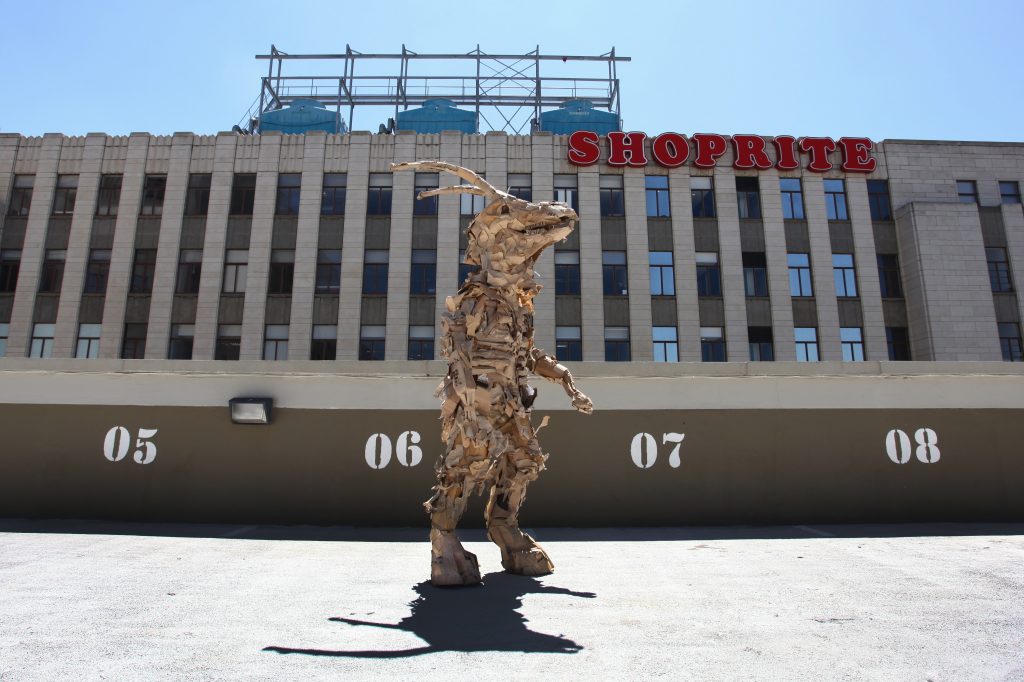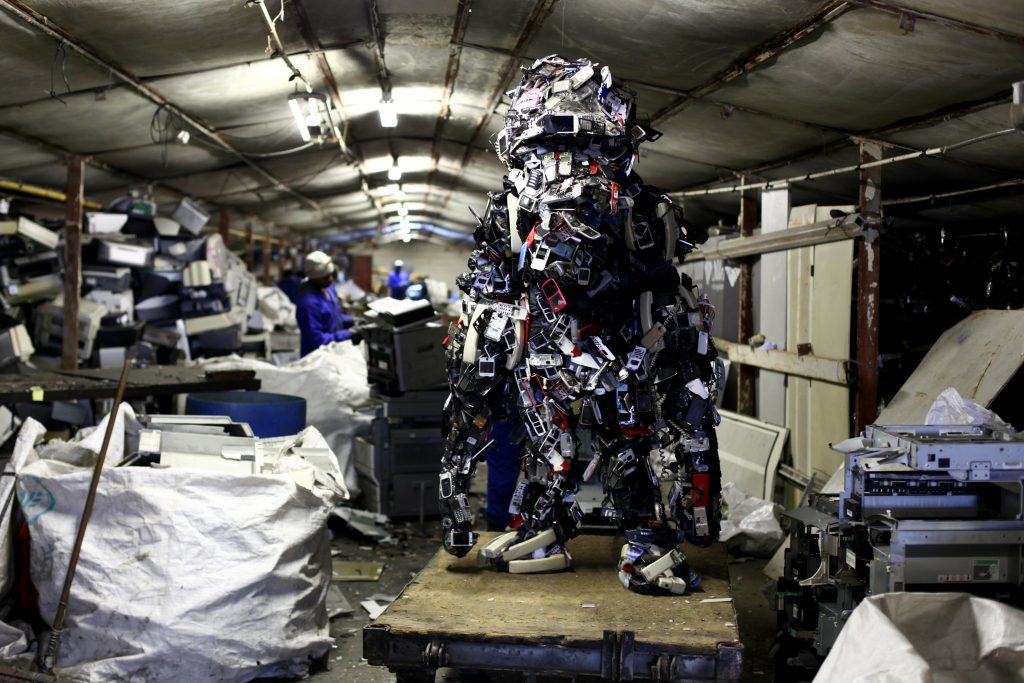Cape Mongo: VHS|Glass|Plastic|Metal|Paper|Cell
Francois Knoetze
2013-2015, Video

Cape Mongo1 follows the stories of six characters as they journey through the city of Cape Town. Each Mongo character is made from the city’s discarded waste – mythical ‘trash creatures’ which have emerged from the growing dumps of consumer culture. In six short films, the creatures revisit the spaces of their imagined pasts – the locations associated with their material existence and the constitution of their social relations – as if walking against the consumer-driven currents of the city. From postmodern shopping malls to the bustling streets of the Bo Kaap to leafy suburbia and desolate shipping-container yards, these characters’ journeys conjure up imagery that touches on some of the historical trajectories that have lead up to the endemic inequality and social alienation which characterises present day Cape Town.
Francois Knoetze was born in South Africa in 1989. He works across sculpture, performance, video and installation, and is interested in the connections between social histories and material culture. Since completing his formal education in 2012, Knoetze’s practice has been itinerant. He has spent the past 5 years working on projects in South Africa, Tanzania (artist in residence at Nafasi Art Space), The Democratic Republic of the Congo (as part of Kinact3), Dakar (Afropixel6/Digital Imaginaries), New York and Shenzhen (Digital Earth Fellowship).
1 Mongo n. slang. object thrown away and then recovered

Mongo zemesrags: VHS|Stikls|Plastmasa|Metāls|Papīrs|Telefoni
Fransuā Knutse
2013-2015, Video
Mākslas darbs Mongo2 zemesrags vēsta stāstu par sešiem tēliem, kas ceļo cauri pilsētai – Keiptaunai Dienvidāfrikā. Katrs Mongo tēls ir radies no pilsētā izmestajiem atkritumiem – tās ir mītiskas “atkritumu būtnes”, kas ir iznirušas no patērētāju kultūras izgāztuves. Sešās īsfilmās, būtnes apciemo vietas no viņu iztēlotās pagātnes – šīs vietas ir saistītas ar viņu materiālo esību un viņu sociālo attiecību veidošanu – viņi it kā iet pret patērētāju virzītām pilsētas straumēm. No postmodernajiem tirdzniecības centriem līdz rosīgajām Bokāpas ielām, tad uz zaļumiem bagāto piepilsētu un pamestiem konteineru laukumiem, savos ceļojumos šie seši tēli liek aizdomāties par dažiem no vēstures ceļiem, kas ir noveduši līdz endēmiskās nevienlīdzības un sociālās atsvešinātības, kas ir raksturīga mūsdienu Keiptaunai.
Fransuā Knutse ir dzimis Dienvidāfrikā 1989. gadā. Viņš strādā tēlniecības, performanču, video un instalācijas jomās, un viņu interesē sociālās vēstures un materiālās kultūras saistības. Kopš oficiālās izglītības pabeigšanas 2012. gadā, Fransuā Knutses prakse ir bijusi saistīta ar ceļošanu. Pēdējos 5 gadus viņš ir pavadījis, strādājot pie projektiem Dienvidāfrikā, Tanzānijā (mākslinieks dzīvo Nafasi Art Space), Kongo Demokrātiskajā Republikā (Kinact3 ietvaros), Dakārā (Afropixel6 / Digital Imaginaries), Ņujorkā un Šeņdžeņā. (Digitālā Zemes stipendija).
2Mongo lietv. slengs. objekts, kas ir izmests un pēc tam atgūts





